By Robert L. Reid
The plan began as a simple, smaller idea to add new lighting to a pair of pedestrian tunnels that link the Kennedy Plaza area in downtown Providence, Rhode Island, to a nearby promenade along the Woonasquatucket River. The international engineering firm Arup was hired for a roughly $10 million effort expected to take only about six months, says Alban Bassuet, an associate principal in the Boston office of Arup, a global advisory, design, engineering, and planning firm. But “when we began the work, we realized there was a lot more to do than just improve the lighting and the tunnel experiences,” Bassuet notes. “We realized there were some structural changes that needed to be made to the area.”
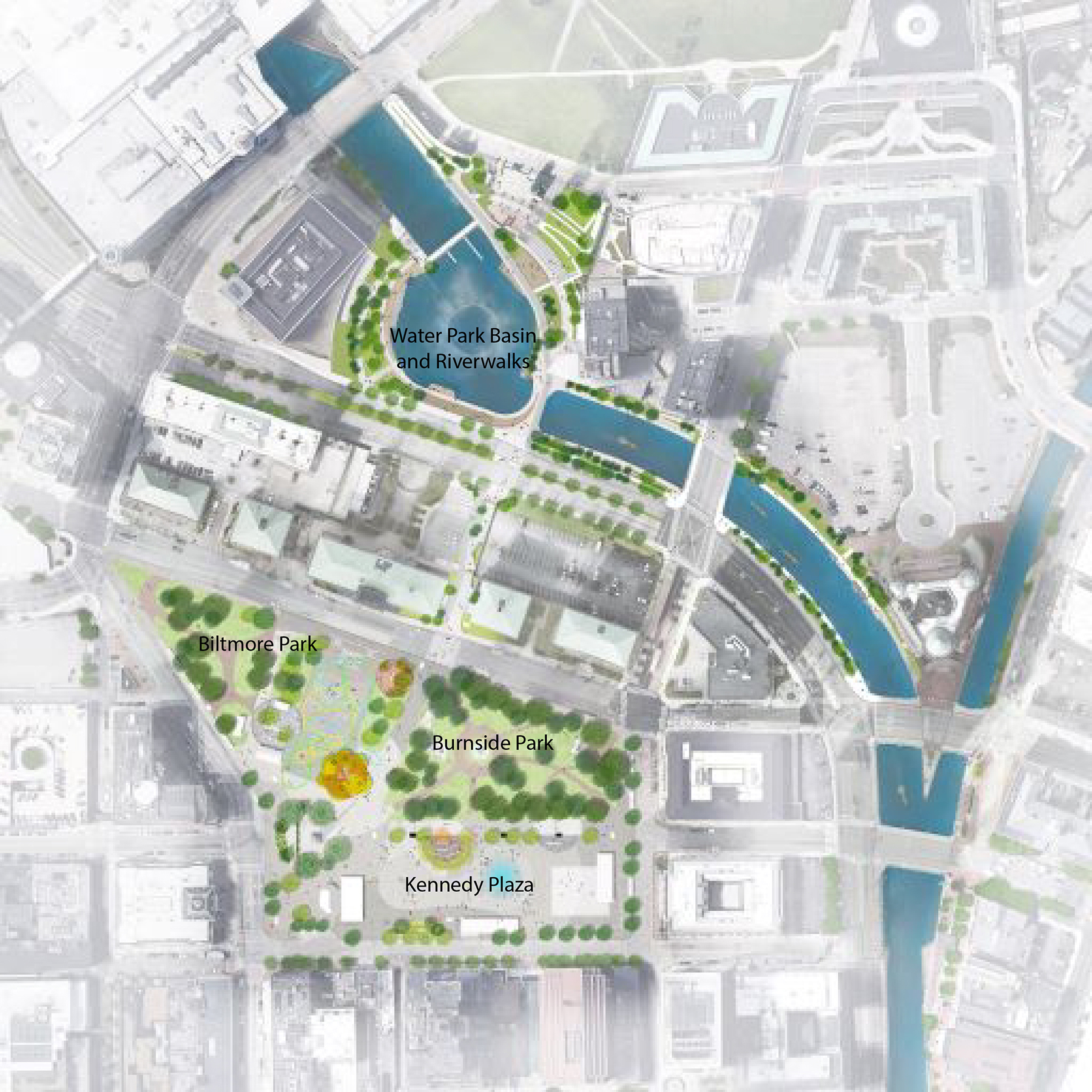
Most of Kennedy Plaza, a roughly 2.5-acre, open, rectangular space fronting on Providence’s city hall, has been used as a bus transportation hub by the Rhode Island Public Transit Authority and private transportation companies — and transportation remains part of the area’s potential, Bassuet says. But the public spaces in downtown Providence were not being used to their fullest potential.
“It is still a very historically and architecturally important part of the city,” Bassuet notes, used by commuters, students, city workers, and others who pass through the area every day. But while there were occasional large festivals held in the plaza, there was an issue with crime and homelessness as well as a lack of adequate public services.
Likewise, the riverfront promenade, known as the Riverwalk, was the site of certain major public events — most notably, the annual WaterFire festival that sets burning braziers floating on portions of the river. But otherwise, the Riverwalk was not used extensively by the public, says Bassuet, who notes that decorative cobblestones along the promenade made it difficult to walk, push a stroller, or keep the site universally accessible. The river also flooded the area numerous times throughout the year — a problem likely to only get worse in the future with expected sea level rise, Bassuet adds.
“We thought there was a compromised public realm for Providence there,” Bassuet says. So Arup worked with the city to develop a more extensive project designed to bring more people, especially families, to the downtown sites on a regular basis. “The city recognized the value of our plan and approved the new direction” of what is now a multiyear, multiphase effort, he explains.
Designated the Providence Unified Vision, the roughly $140 million plan encompasses changes to approximately 15 acres of downtown Providence, including Kennedy Plaza and the Riverwalk, as well as adjoining spaces such as the Biltmore and Burnside parks. The scope of Arup’s work includes serving as the project lead and a co-lead of the overall design; the structural, civil, and mechanical and electrical engineering; urban design and placemaking; community engagement; acoustics and audiovisual design; lighting; security; and other duties.
The project team includes Providence-based Ultramoderne as the architect and a co-lead of the design and urban design; Cambridge, Massachusetts-based Stephen Stimson Associates Landscape Architects Inc., as the landscape architect and co-lead of the design and urban design; Providence-based Civic Inc., which is responsible for community engagement; Sun Valley, California-based WET Design, which is designing water features; and other firms.
Transforming Kennedy Plaza
A key supporter of the project is Providence Mayor Jorge Elorza, who has stated that when he grew up as a young man in Providence, he never developed an affinity for Kennedy Plaza — but now he intends to change that, Bassuet notes.
Toward that goal, the plaza will be transformed into a large public square with multiple new amenities, including new performance stages, a large shade structure, a seasonal ice skating rink suitable for roller skating in warmer months, play areas for children, a cafe and food court area as well as space for food kiosks and food trucks, retail spaces, and an area designed primarily to appeal to teenagers, Bassuet says.
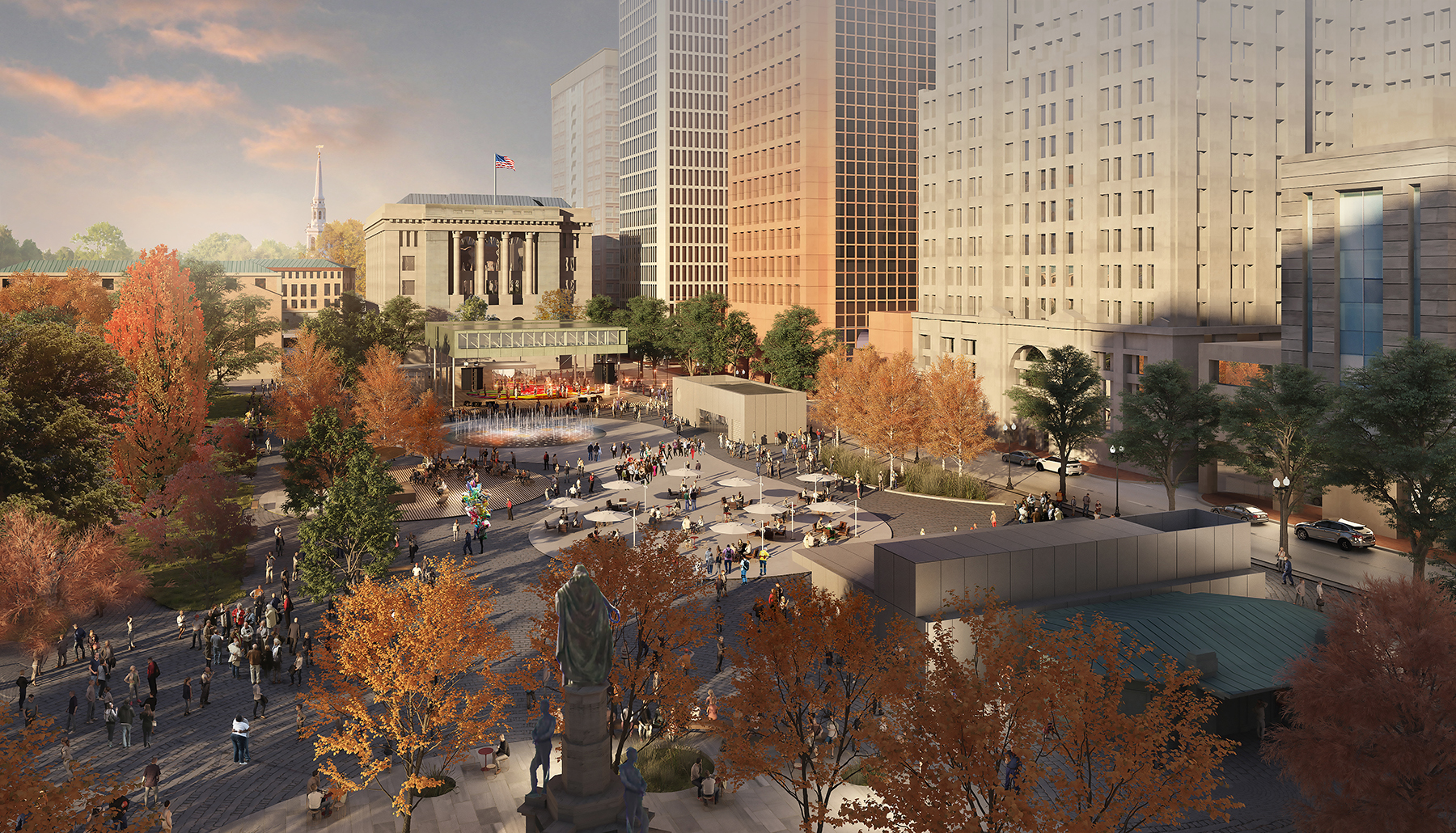
In addition, the project will include public restrooms, possibly with showers to serve the area’s homeless population; heated areas for the winter and other spaces for shelter from the elements; inexpensive storage areas; and possibly a space with computers available for public use, Bassuet notes.
“We are actively creating amenities for people experiencing homelessness and aiming to create true inclusion for all layers of society and communities,” Bassuet says. “It is a place for all the people of Providence.”
The new Kennedy Plaza will also feature a large, steel-framed shade structure — measuring about 100 ft by 100 ft and 30 ft tall — that will cover open spaces for music as well as an enclosed food court. There will also be equipment in the canopy to lift heavy lighting or sound systems into position for concerts or other events, Bassuet says. A former, somewhat aging, ice rink will be demolished and replaced by an area dubbed Free Space, which is designed specifically for teenagers and will feature a stage as well as surrounding walls for privacy and sound reflection.
The new ice rink will be created elsewhere on the site and will feature a sinuous layout in plan — like a frozen river, Bassuet explains — that can double as a roller skating area and include an interactive water feature for children in the warmer months.
Distributed across the site will also be several circular spaces each about 100 ft in diameter. Dubbed “islands of experience,” these spaces will be set off by different materials and the use of vegetation to help balance the “the collective and the individual” within Kennedy Plaza, Bassuet says. Although visitors can explore and engage with the larger plaza as they wish, the islands will provide smaller spaces on a more human scale, where it will be easy to see and speak with other people across the space, he explains.
Reimagining the Riverwalk
As part of the Providence Unified Vision plan, two vehicular streets leading into Kennedy Plaza — Washington Street and East Approach — might be closed, along with the tunnels from Kennedy Plaza to the Riverwalk.
A new pedestrian bridge — instead of the tunnels — will provide access to the riverfront promenade, which itself will be elevated to protect against flooding, Bassuet says. The steel-framed bridge will measure roughly 700 ft long and between 14 and 20 ft wide in places and be elevated about 15 ft above grade along its route. It will be supported on a series of old piles from a long-demolished railroad station and tracks that were left in place, Bassuet says. The piles are strong enough to also support a building — such as a hotel — that might eventually be constructed above the bridge, he adds.
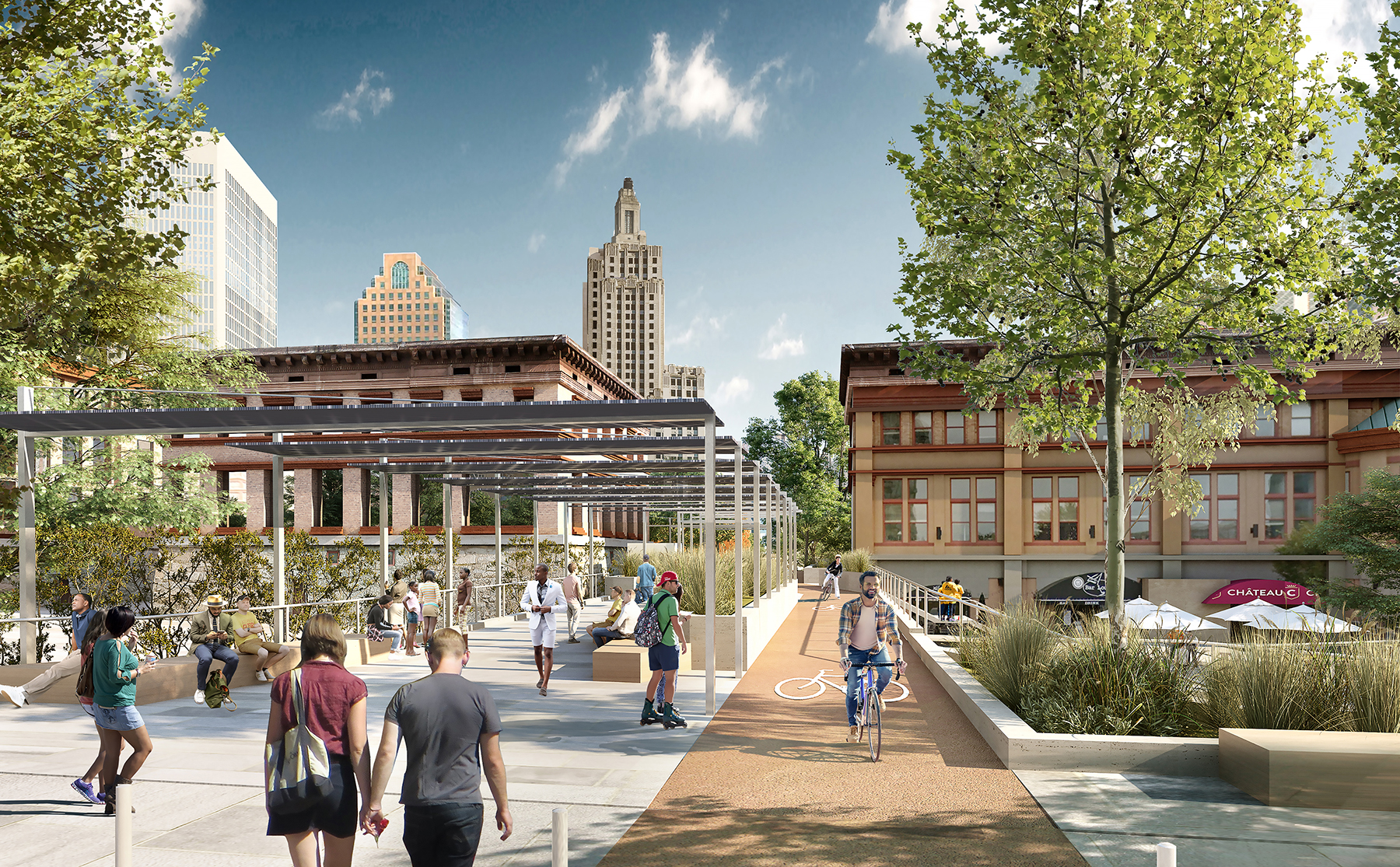
The Riverwalk will be raised approximately 5 ft to accommodate the expected sea level rise by 2050, Bassuet says. Although the details are still being determined, the elevated Riverwalk will also replace the original cobblestones with a new, uniform surface, perhaps concrete or a steel grating in places, he adds.
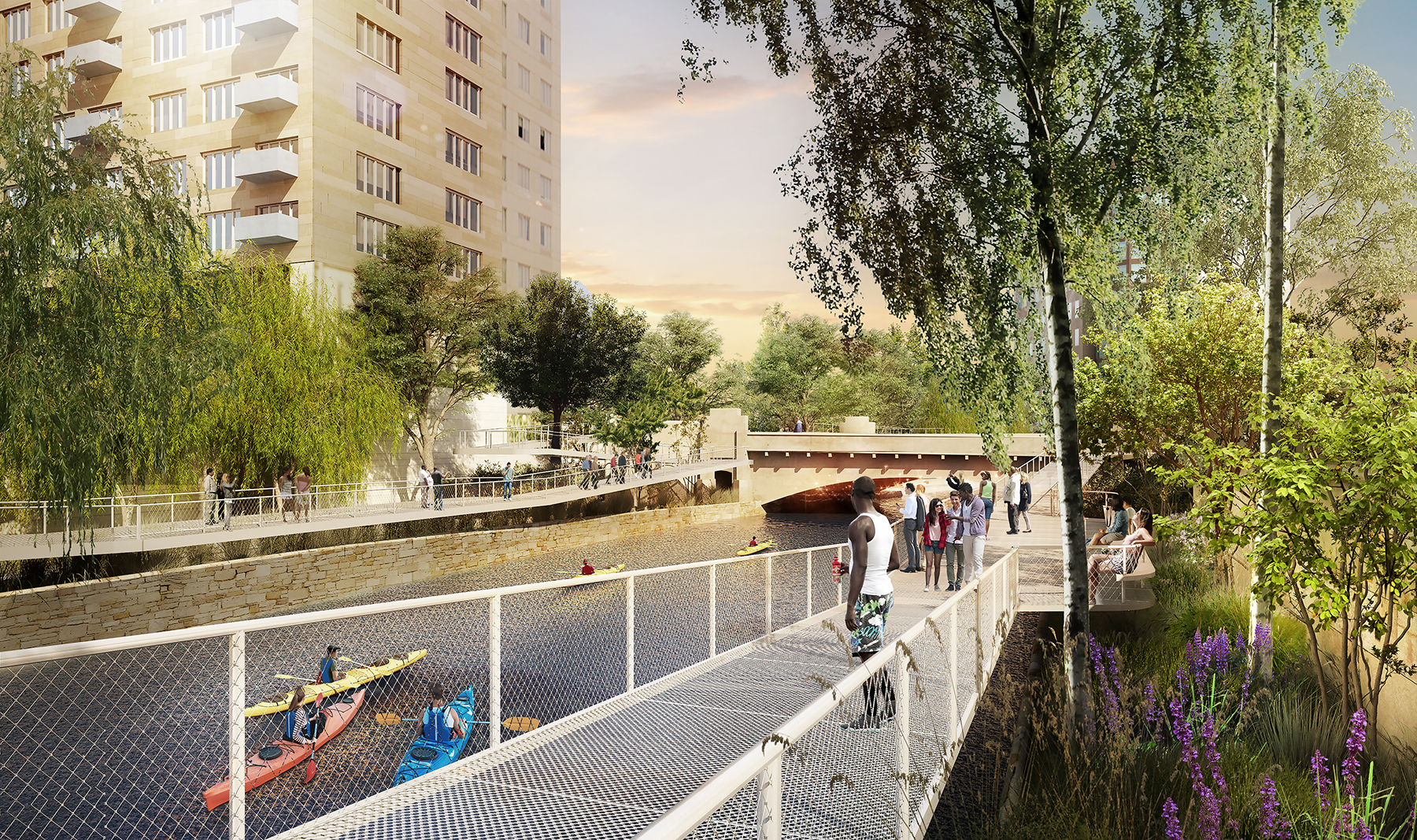
The circular aesthetic from Kennedy Plaza will be repeated at the Waterplace Park Basin along the Riverwalk, a roughly circular space that measures approximately 300 ft in diameter. A misting water feature is planned for the site, featuring a metal ring roughly 70 ft in diameter and suspended over the basin via cables attached to a series of tall masts.
The ring recalls Providence’s role in the metal plating industry, the masts highlight its maritime history, and the mist that will fall from the ring commemorates the steam engines that once were manufactured in Providence, Bassuet says.
Engaging with the community
A “robust” community engagement effort helped establish the design goals of the project, Bassuet says. Local business owners, for example, expressed an interest in more retail or commercial spaces within the site. Community activists urged the planners to protect the rights of the homeless people living in the area as well as others in the diverse community who “had not historically enjoyed and taken part of the plaza,” Bassuet says.
Using its proprietary Virtual Engage software, Arup created an online interface that allowed people to log on to a website about the project and navigate through a virtual tour of the planned new amenities, Bassuet says. The system enabled viewers to compare images of the existing sites to renderings of what the project planned to construct. They could even listen to a soundscape of people enjoying the new public spaces.
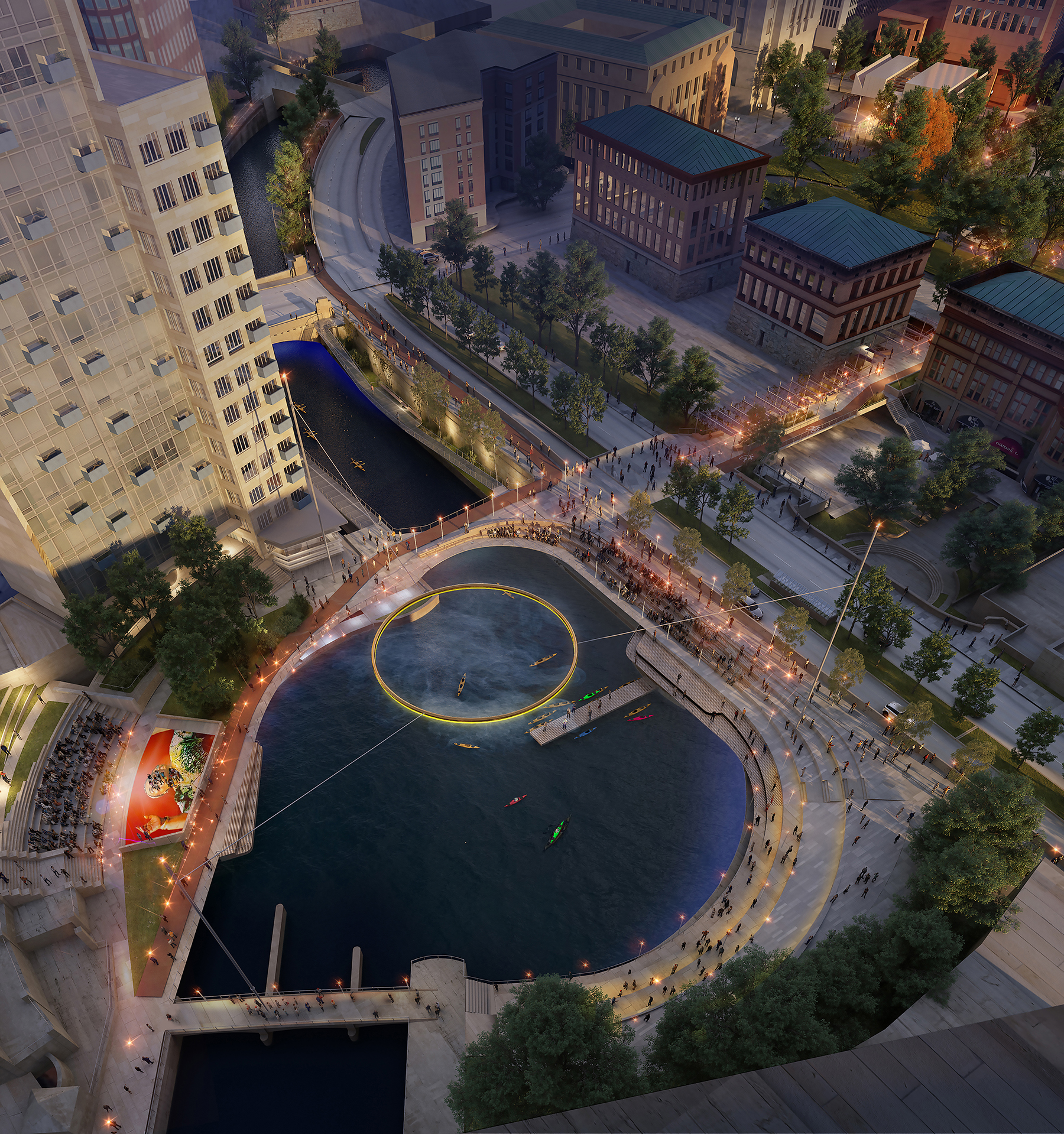
The outreach efforts featured surveys and other means of gathering information from the public, which helped the project team develop the design, Bassuet says. Going forward, the project will also consider a series of digital signs and displays to provide information that can change over time — from scheduled events to commemorations of Providence’s history.
Construction on the project is expected to start this spring; a completion date has not been announced.



